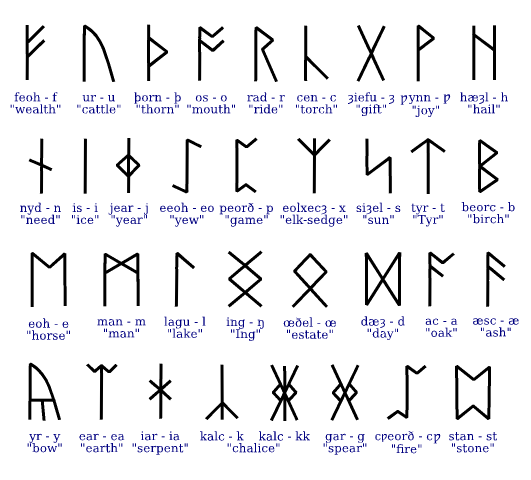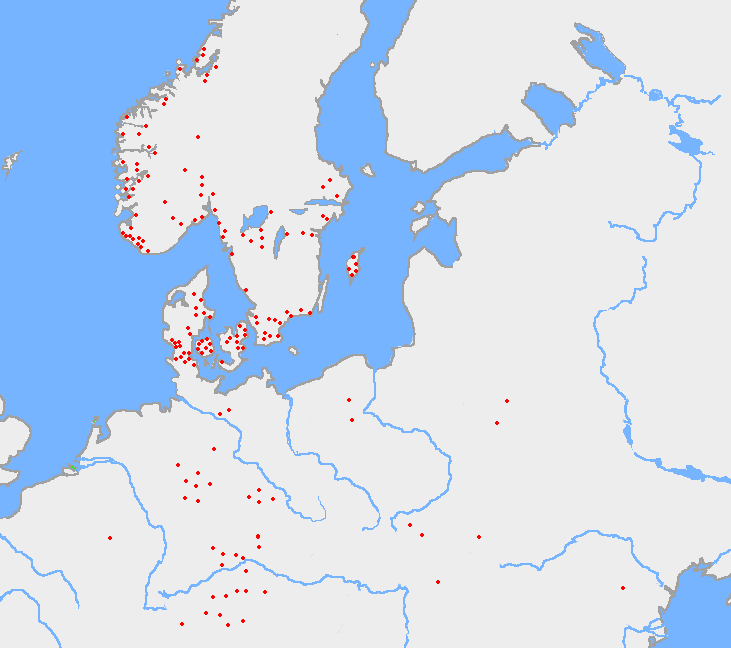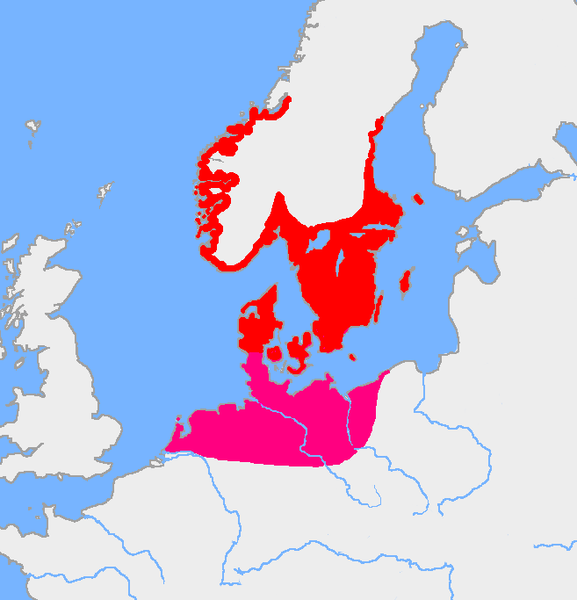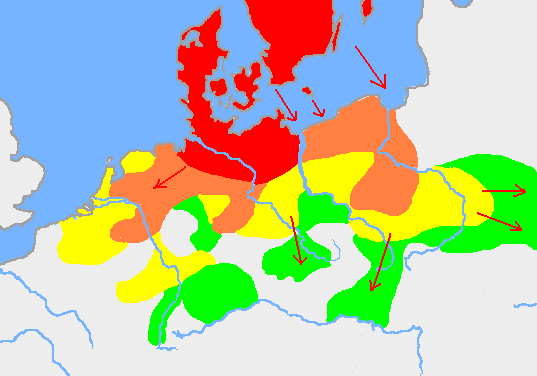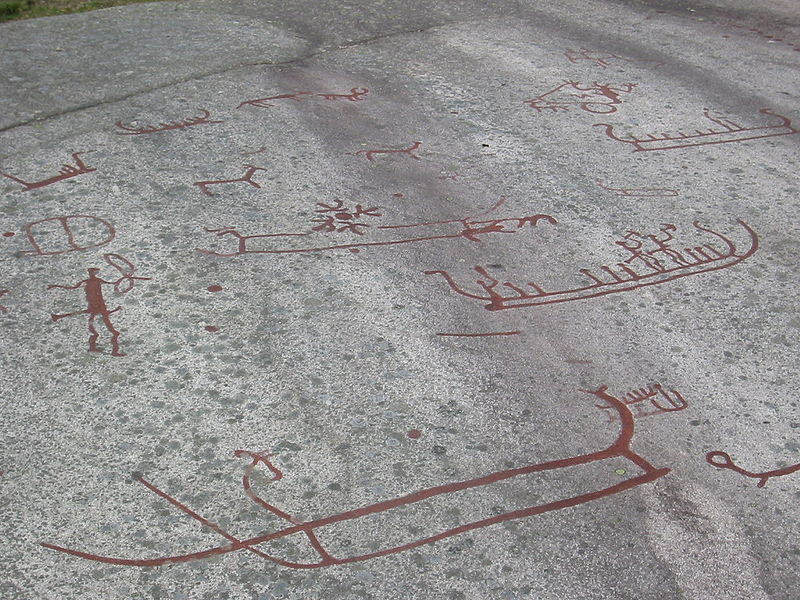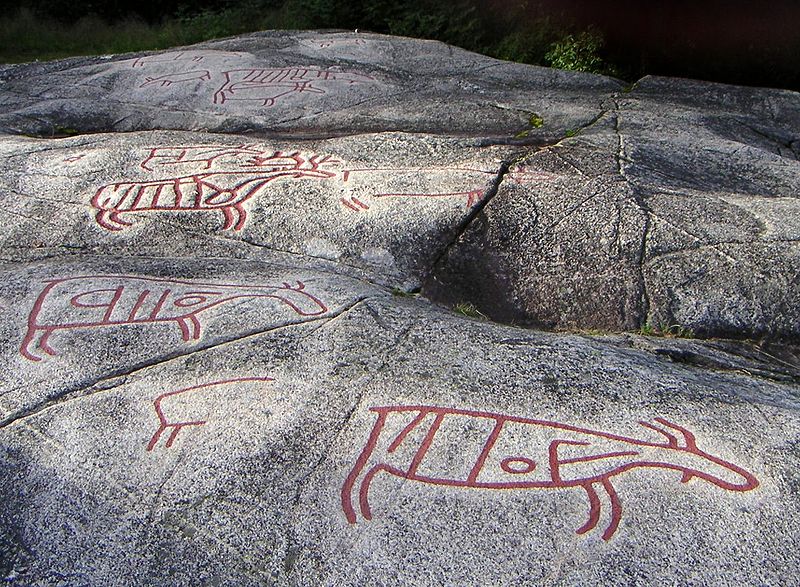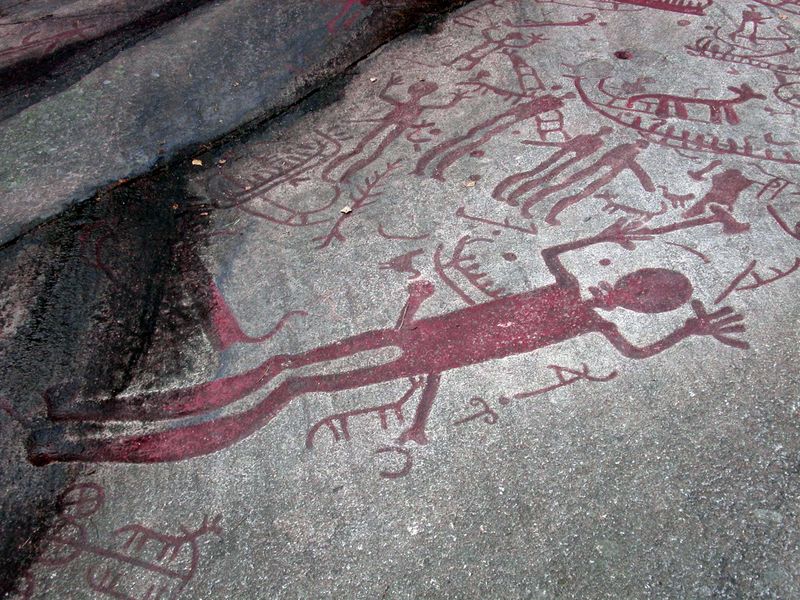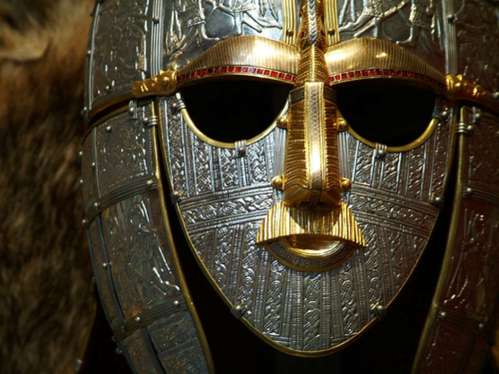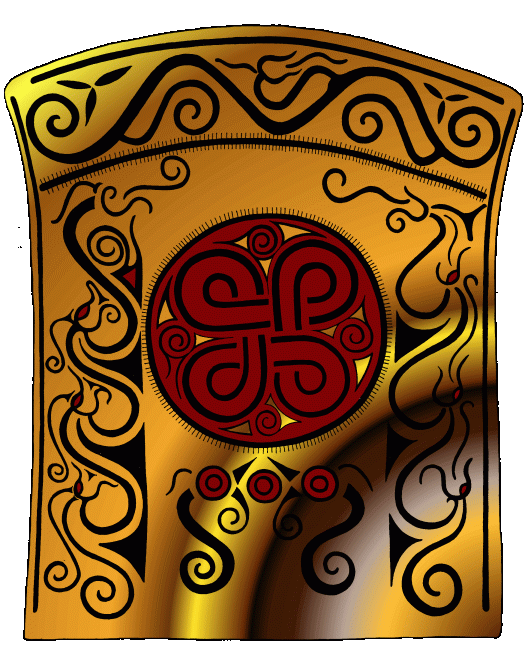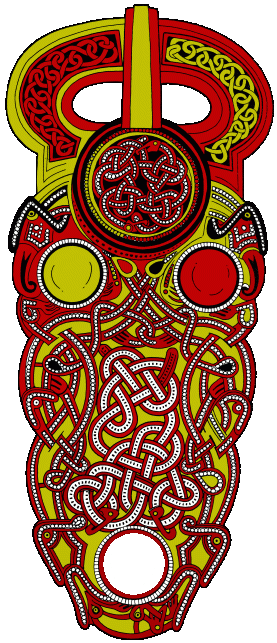Anglo-Saxon word of þe dæg: (Wælcyrġe)
Anglo-Saxon word of þe dæg:
ᚪᚾᚷᛚᚩ ᛋᚪᛉᚩᚾ ᚹᚩᚱᛞ ᚩᚠ ᚦᛖ ᛞᚫᚷ᛫
Wælcyrġe ( Valkyrie)(sorceress, witch, female spirit)(daughters of Odin)(Chooser of the slain) from Proto Germanic “walakuzjǭ“. ᚹᚫᛚᚳᚣᚱᚷᛖ᛫
Compare:
Old English: wælcyrġe, uualcyrġe, wælcyrġe, wælcyriġe, walcrigge, walcyrġe
Middle English: walkirie, walkyrie
English: Walkyrie-Valkyrie
Old Norse: valkyrja
Swedish: valkyria
Danish: valkyrie
Faroese: valkyrja
Icelandic: valkyrja
English: valkyrie
Low German: walköre
German: Walküre
Dutch: Walkure
………………..
Bonus:
Bēor (beer) from Proto Germanic “beuzą”. ᛒᛖᚩᚱ᛫
Example:
Gebeotedon beore druncne oret-mecgas, ðæt hie in beor-sele bidan woldon Grendles guðe
The sons of conflict, drunk on beer, promised that they would wait in the beer-hall for Grendel’s attack.
Compare:
West Germanic: *beuʀ
Old English: bēor
Middle English: bere, beere
English: beer (see there for further descendants)
Scots: bere, beir, beer
Old Frisian: biār
Saterland Frisian: Bjoor
West Frisian: bier
Old Saxon: bior
Middle Low German: bêr
German Low German: Beer
Mecklenburgisch: Bier
Plautdietsch: Bea
Old Dutch: *bier
Middle Dutch: bier
Dutch: bier
Limburgish: beer
Old French: biere
Old High German: bior
Middle High German: bier
Alemannic German: Bier, Biär, Pier
Bavarian: Bäia
Cimbrian: bir
German: Bier
Luxembourgish: Béier
Pennsylvania German: Bier
Old Norse: bjórr
Icelandic: bjór
Faroese: bjór
Norwegian: bjor
Middle Irish: beóir
Irish: beoir
………….
Hroðberht-
Rune of þē dæġ (Hægl)
Rune of þē dæġ:(Hægl)
Hægl ᚺ: Modern “H”.
Literally the natural precipitation Hail.
A Rune who’s reputation is notoriously negative however this post is not about divination and Hægl is being presented simply as the Runic “H” sound and “K” (middle/end of words) sound in Anglo Saxon.
Anglo Saxon Rune Poem:
Hægl byþ hƿitust corna;
hƿyrft hit of heofones lyfte,
ƿealcaþ hit ƿindes scura;
ƿeorþeþ hit to ƿætere syððan
Hail is the whitest of grain;
it is whirled from the vault of heaven
and is tossed about by gusts of wind
and then it melts into water.

Who are the Norse people (History/Culture post)
The Norse/Germanic people : A brief history:
The history of the Nordic people begins in Central Asia and the Russian steppe when the Indo-Europeans start migrating west into modern-day Europe. During the great migration a branch of the IE moved into present day Scandinavia and became isolated most likely due to climate disruptions. Human beings have occupied Scandinavia for at least 11000 years. It is in the forest and frozen mountains that the Nordic people get the distinct cultural/linguistic identity known as Germanic. After developing a unique culture the Germanic people begin moving south for less turbulent weather and cross the Baltic and North seas into Germany, Poland and Jutland. The migration age tribes founded the modern Nordic countries we know today like Scandinavia (Norway-Sweden-Denmark), Germany and England to name a few.
The culture of the Norse was actually already 1000 years or older when the Viking age began and a new wave of Germanic people again started crossing into Europe and Britain carrying largely the same migration age culture, legal systems, Runic codex and religious beliefs as the previous migrating tribes. Some of the identifying markers of Nordic culture is complicated knot work, exceptional metal/wood work, seafaring/boat building and design, metaphoric poetry and spoken word, grand feasting halls, ancestral worship and equal rights for women. A fact reviled by Roman authors when facing the Teutons in the Alpine regions during the migration age. I use the term Norse as a general description of the larger Germanic culture from its Dutch origin “Noors” “People from the north” because Germanic culture originates in Scandinavia/Denmark.
Runes:Glossary:
We Norsemen have an indigenous alphabet called Runes or the Elder Futhark, The header of my blog is in Anglo-Saxon Futhorc set and many variations exist as the system evolved out of the Elder Futhark. Runes were typically used for marking ownership such as Hermeric owns this knife or Olaf is buried here but many large inscriptions do exist. Each sign also has a divine meaning with immense power behind it. I have often called the Runes the language of the universe. I personally believe in the power behind the Runes. The origin of the Futhark is a mystery, theories exist but none satisfy in explaining the origin. It was largely accepted that a Mediterranean origin like Etruscan might explain it but no early finds exist near the Mediterranean, they all exist in Denmark , Northern Germany and Scandinavia. Now it is theorized that Western Germany/Denmark may be the original zone of expansion and Scandinavia being less explored has some very old inscriptions and “could” be the originator of the Runic script. Some have linked the Runes with the Hallristningar symbols carved in Neolithic Sweden/Norway which adds a new layer of age and interest to the story. The divine description in the Norse Lore is that Allfather Odin pulls them from Ginnungagap as he is hanging from Yggdrasil. A full article on Runic origins and theory will be presented in an upcoming post.
Sites of Elder Futhark discovery in Europe. Common Germanic would be the language. All German languages were mutually intelligible at this time.
Geography:

Nordic Bronze Age. 1700-500 BC
Pre-Roman Iron Age in Germania/Scandinavia 5th/4th – 1st century BC
Germanic Migration 750BC-1AD.
Red= Before 750 BC
Orange= New settlement by 500 BC
Yellow= New settlement by 250 BC
Green= New settlement by 1AD.
………………………………………………………………..
Stone Age Connection to Germanic Culture:
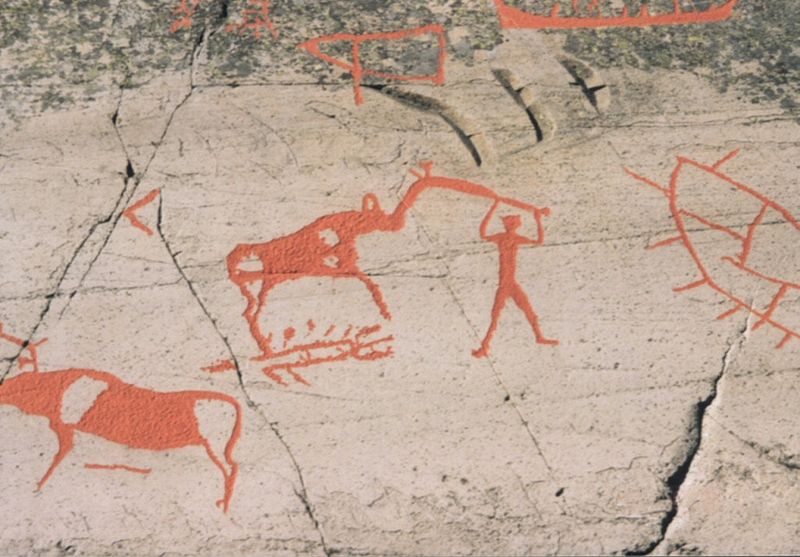 Stone Age Carving from Norway.
Stone Age Carving from Norway.
Complex Nordic Bronze age carving of obvious similar creation as the design above.
Rock carving form Norway (Over 6000 years old) Showing unique artistic elements.
Norway 1200BC
Many images on these stones dating from 6000 years ago tothe Iron age depict many traditions found in Germanic and later Viking age culture such as waging war on boats, farming/herding, fishing, ship design, beings in Germanic religion and symbols found throughout Nordic culture prehistoric to modern. When looking at these images one could understand how the Runes may have evolved out of it stylistically. The exact culture responsible is unknown in some cases but elements can be traced to later Nordic customs.
STONE CARVING PHOTO’S ARE FROM WIKIPEDIA. Copyright to respective owners.
A small gallery of images and symbols. Art of my own creation is marked.
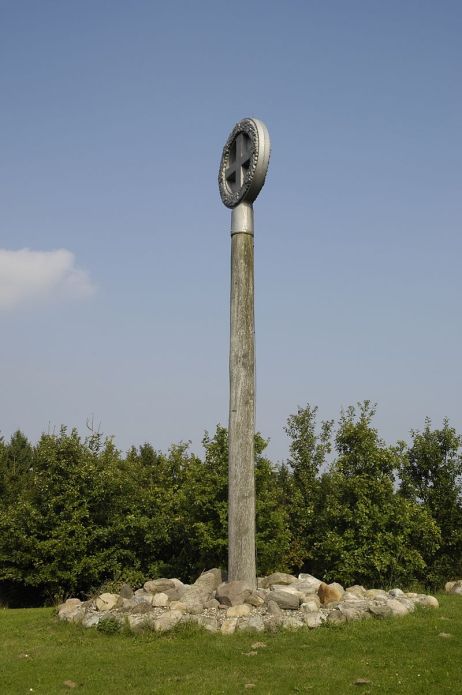
Irminsul: Ancient German totem most likely of Yggdrasil (World tree) Symbol is associated with The Saxons and a Deity called Irmin who is most likely Odin under one of his alias/regional names. (Photo by Varus111) Reconstructed Irminsul in Hildesheim Germany.
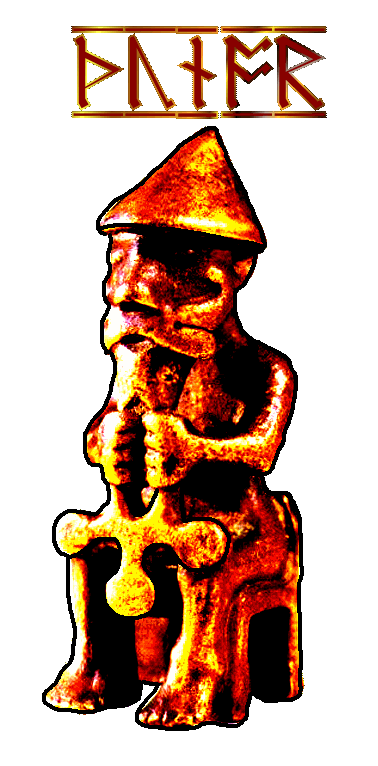
Thor-Thunor: Nordic Thunder God. Viking age bronze statue.
Helmet replica from the Sutton-Hoo find. Adorned with glorious plates referencing Nordic customs, legendary figures and amazing detailed metal work. (Not my photo)
Stone carving designs from Gotland Sweden. Copyright Call Of Steel 2012.
Gotland Sweden Stone Carving: Pre Viking. Copyright COS 2012.
Viking age stone carving from Gotland Sweden:Viking age. Copyright COS 2012.
Anglo Saxon decoration. Copyright COS 2012.
…………………………………..
In summary I hope this post gave at least some idea of Norse culture. It is near and dear to my heart as I descend from these mighty folk and try as an artist to keep some element of the old ways alive and well into the future.
Thanks for reading and stay tuned for more Blacksmith and historical posts.
Hroðberht-




